Pendulums by Dr. Sylvain Bertrand, IHMC
March 21, 2015
March Science Saturday in Pensacola was about pendulums. With a simple set of materials, 60 elementary school students experimented with principles of basic physics. This hands-on science session was led by Dr. Sylvain Bertrand, a Research Associate at IHMC.
-
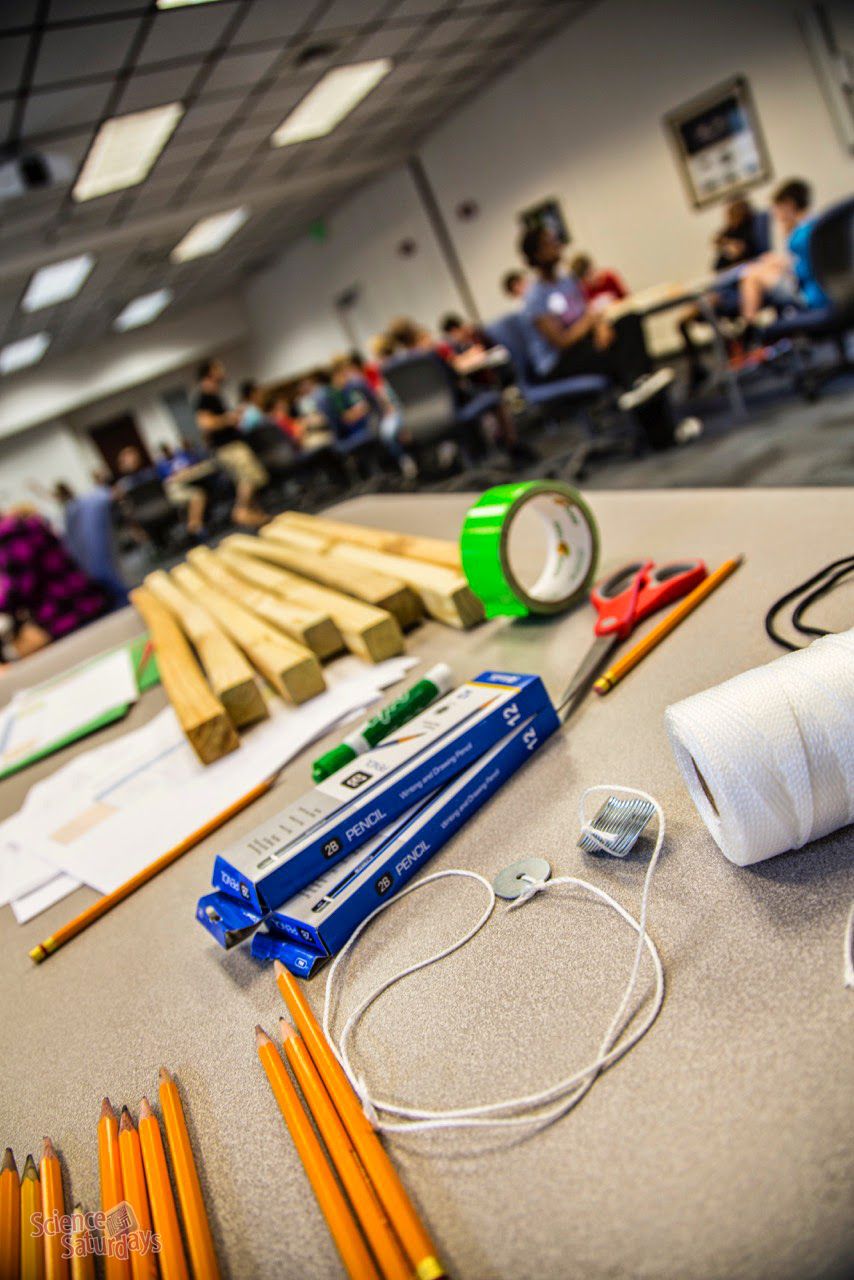
March Science Saturday in Pensacola was about pendulums. With a simple set of materials, 60 elementary school students experimented with principles of basic physics. This hands-on science session was led by Dr. Sylvain Bertrand, a Research Associate at IHMC.
-
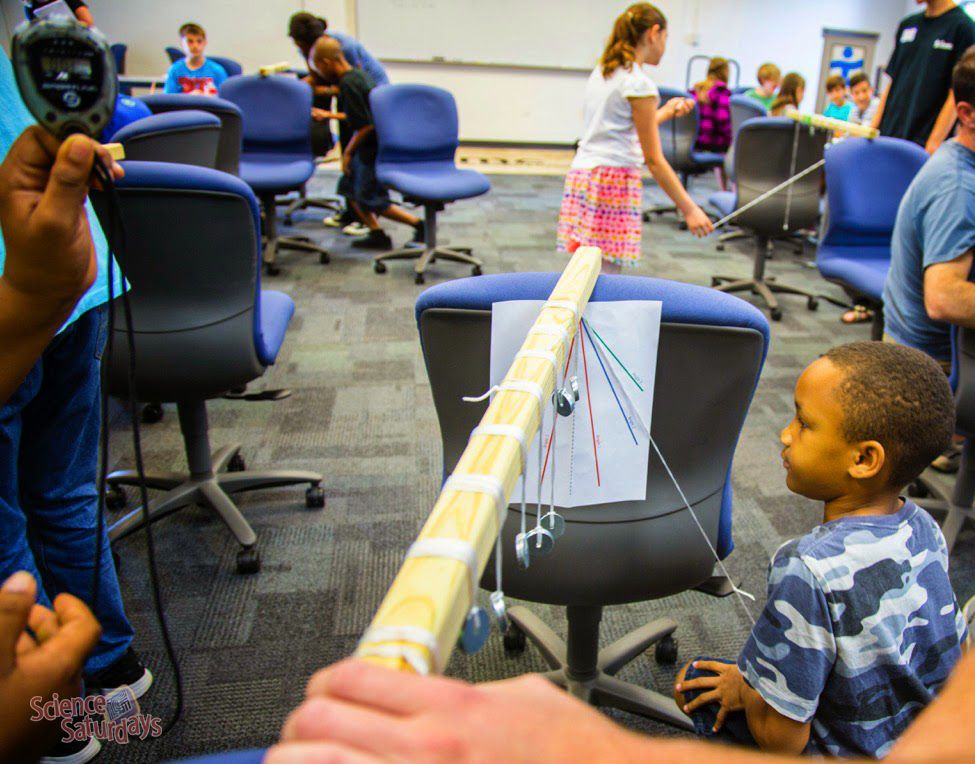
Students experimented with three characteristics of pendulums - the length, the mass (or weight) and the angle of release.
-
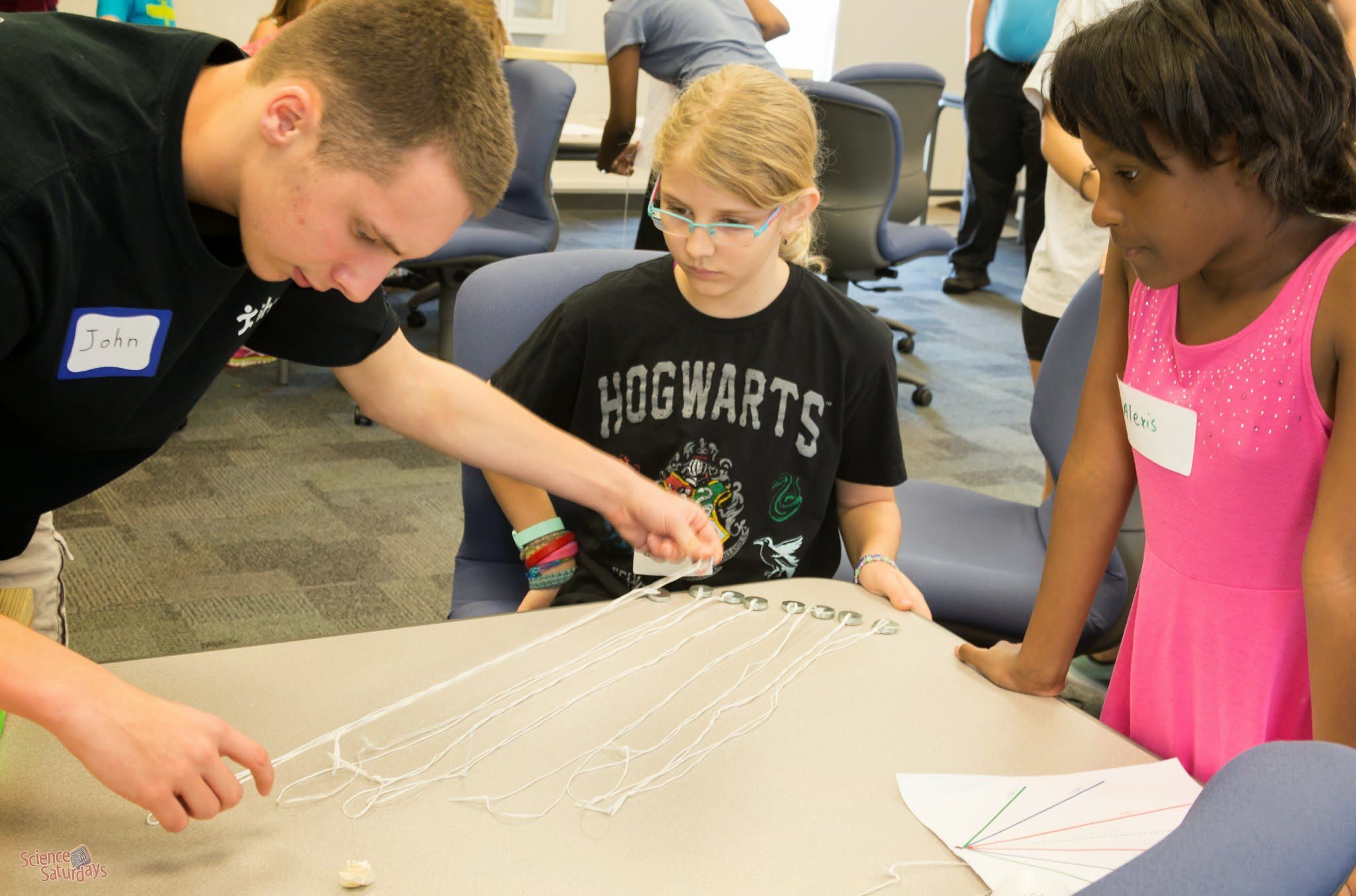
A number of different pendulum lengths and weights were provided. Students chose three of the lengths for their experiments.
-
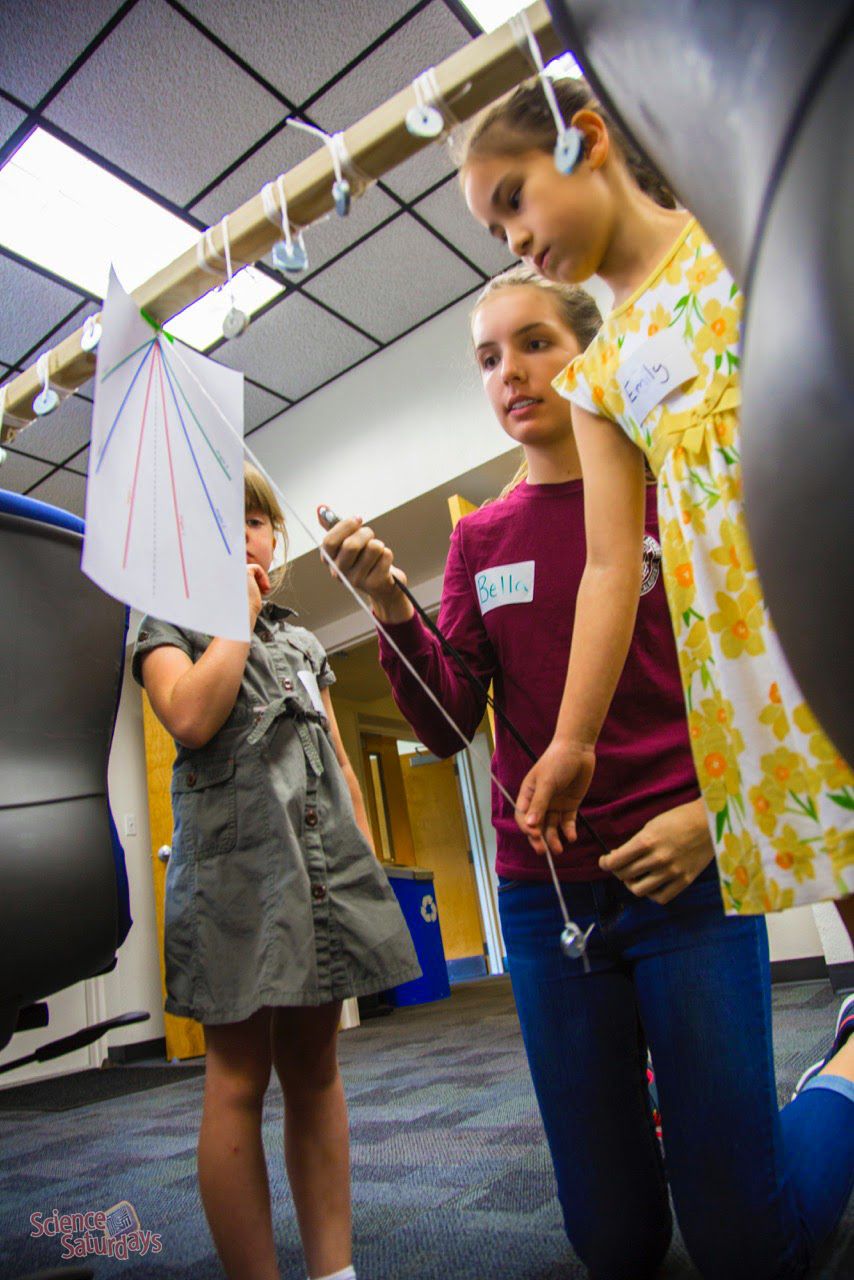
Worksheets provided three different angles from which to repeat the experiment. Mass was varied by adding additional washers.
-
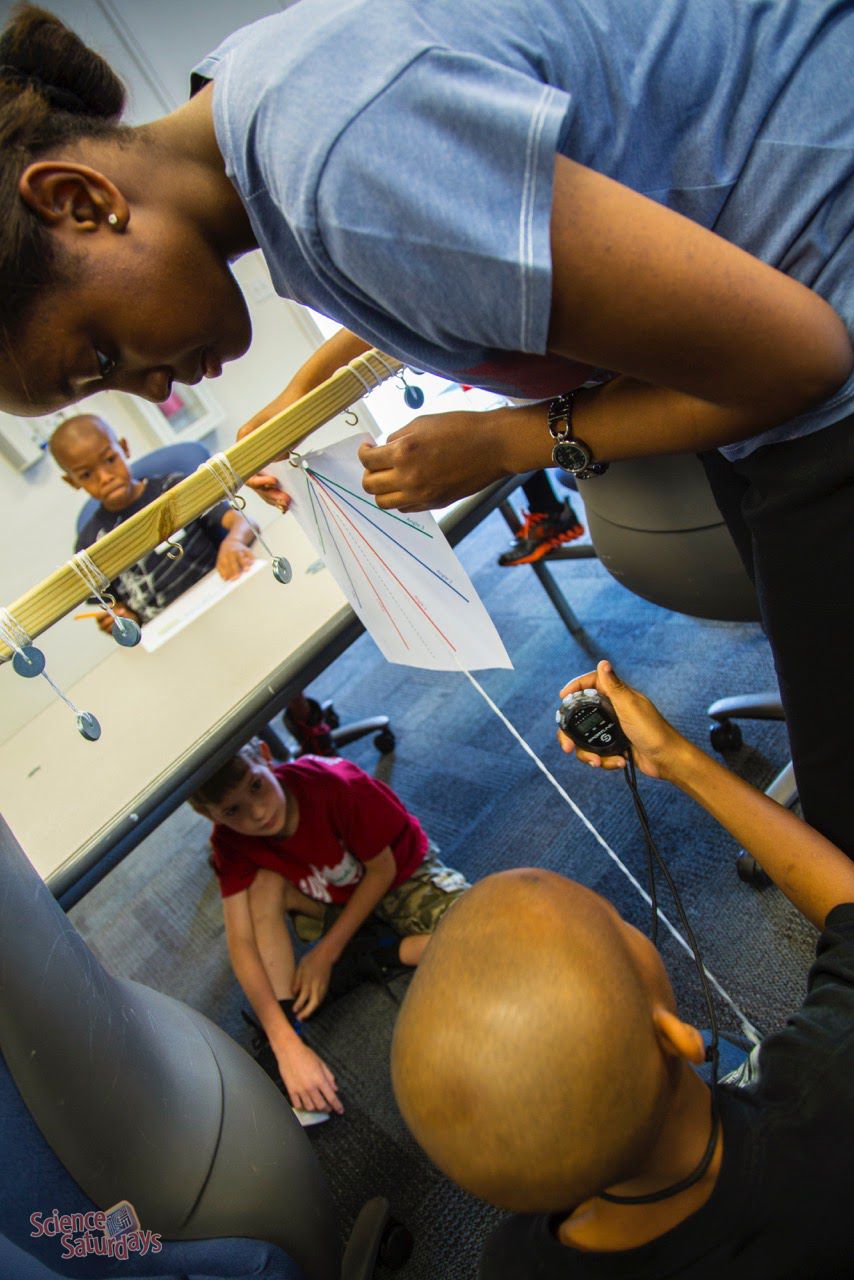
The goal was to determine which of the three characteristics affects the time that it takes for a pendulum to complete a swing from its release point and back again.
-
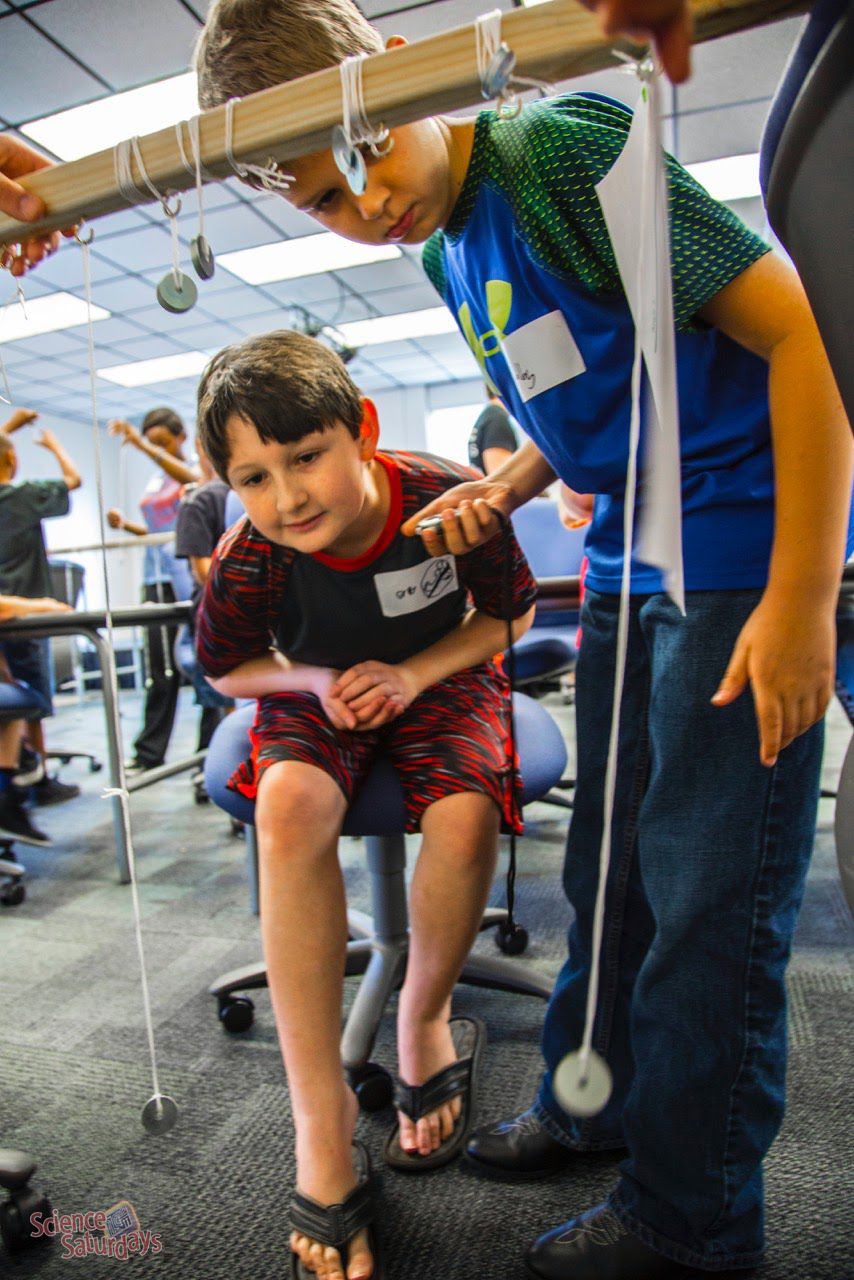
The amount of time required for a swing was carefully measured by teams in which each member had a role.
-
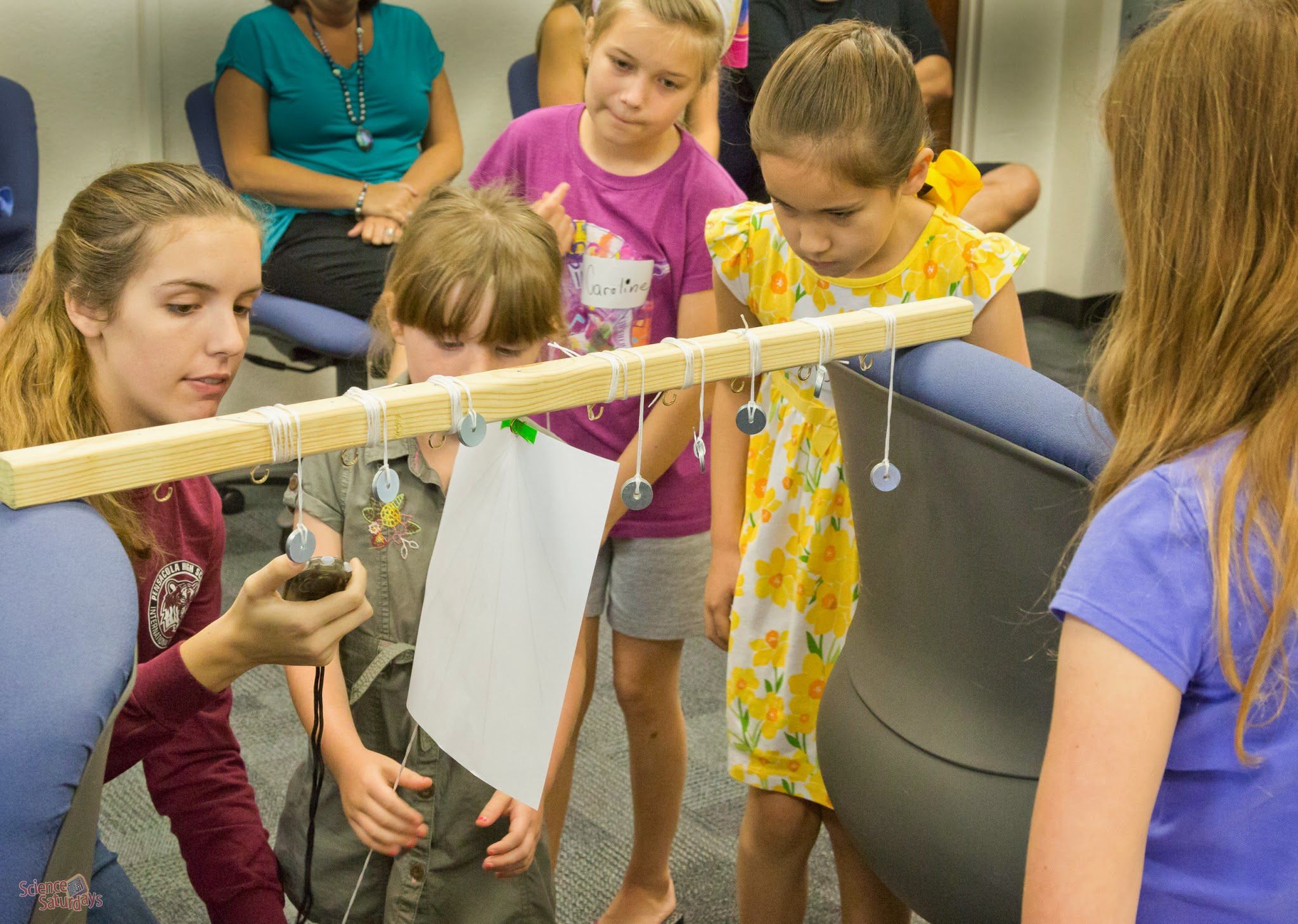
Precision was important.
-
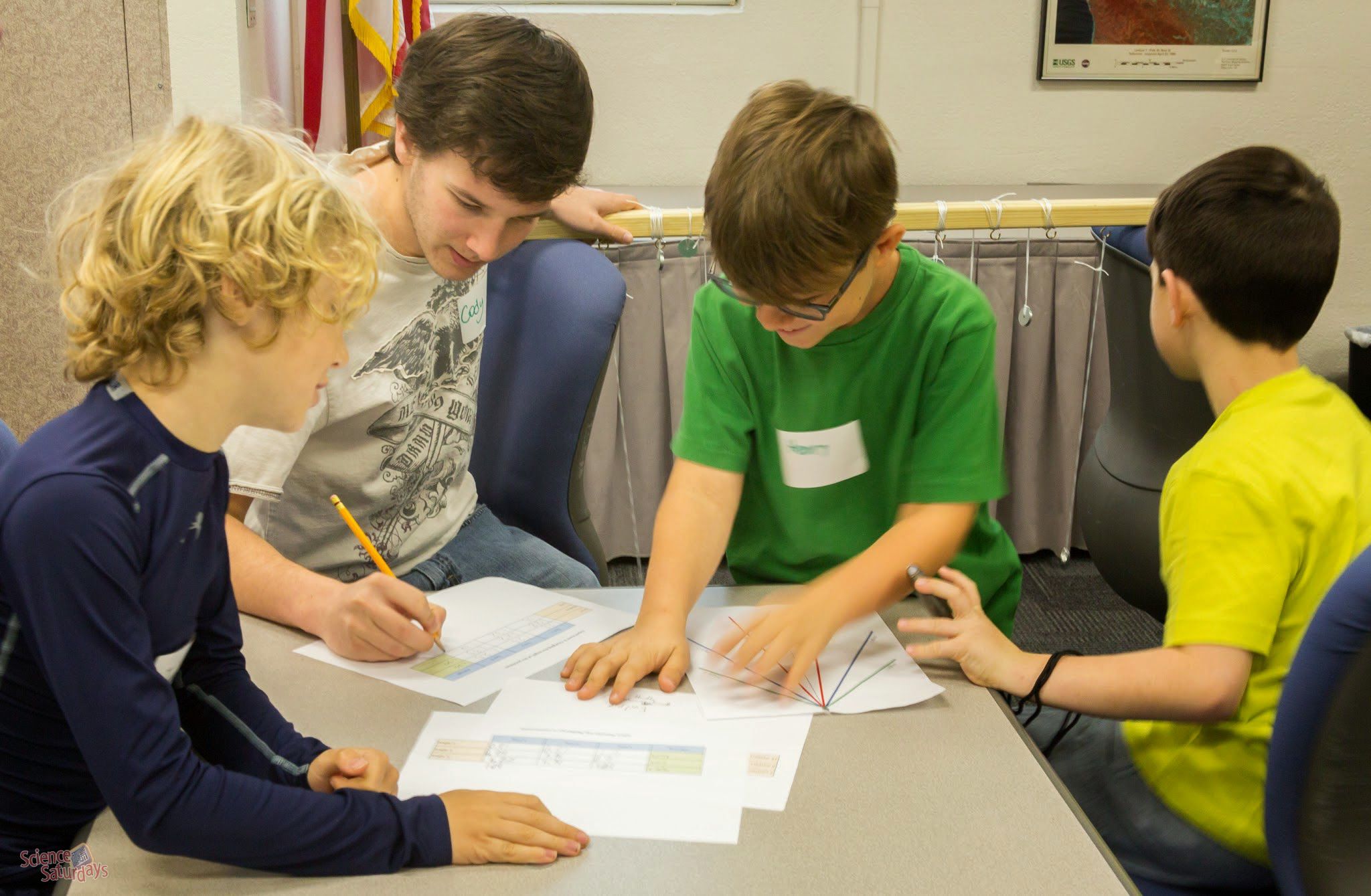
Measurements were recorded.
-
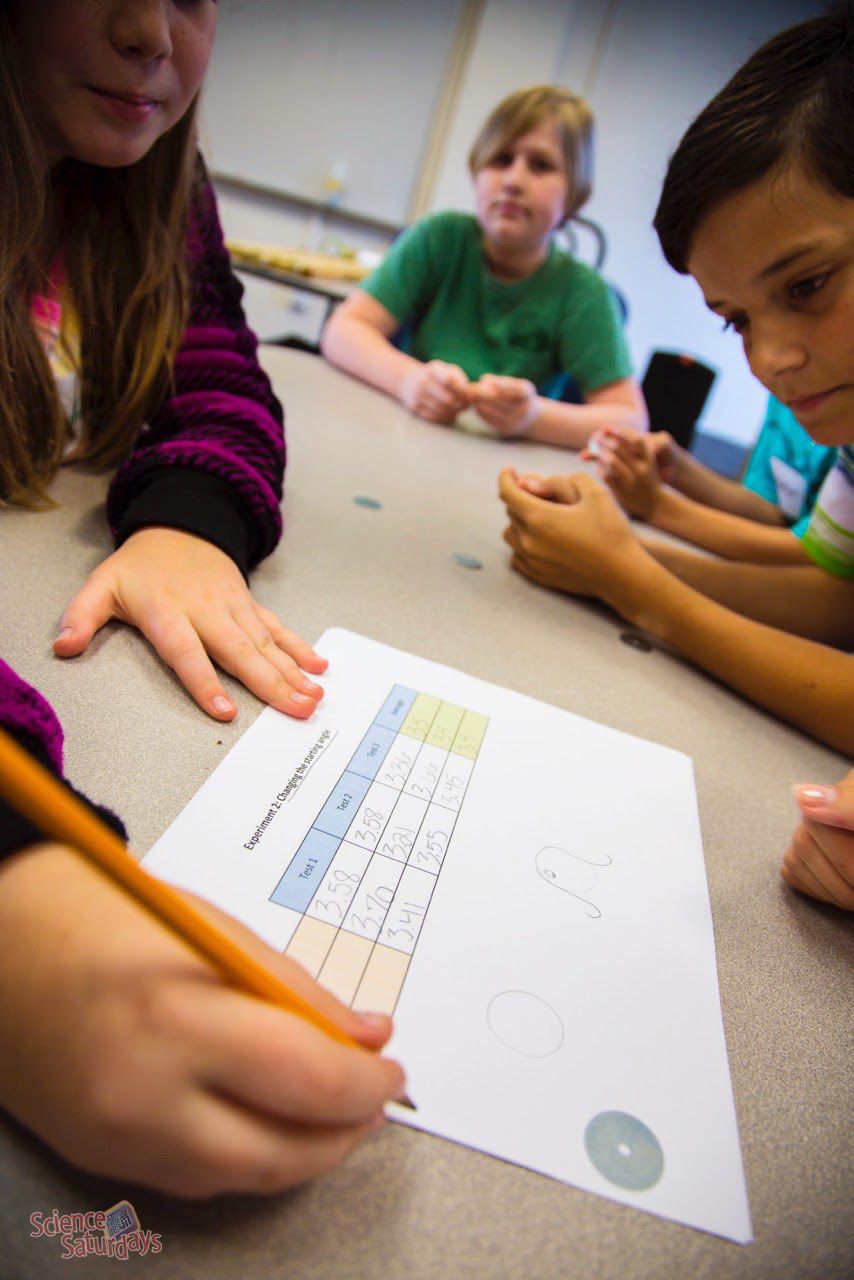
Experimental data was logged by each group.
-
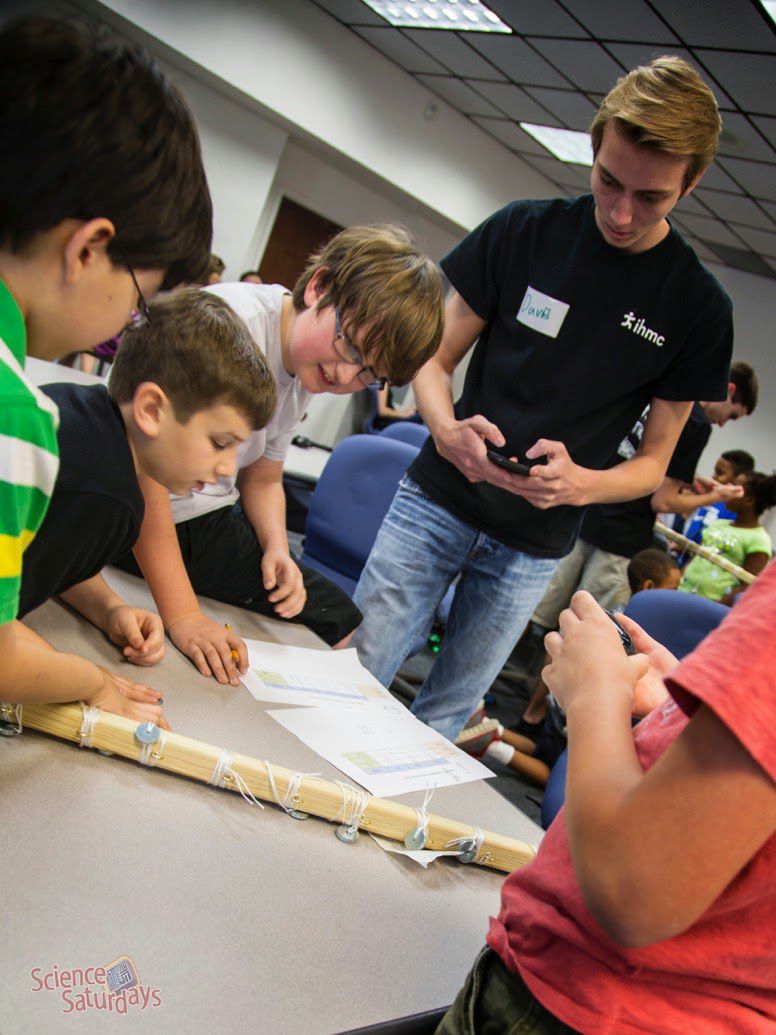
For accuracy, each measurement was repeated multiple times.
-
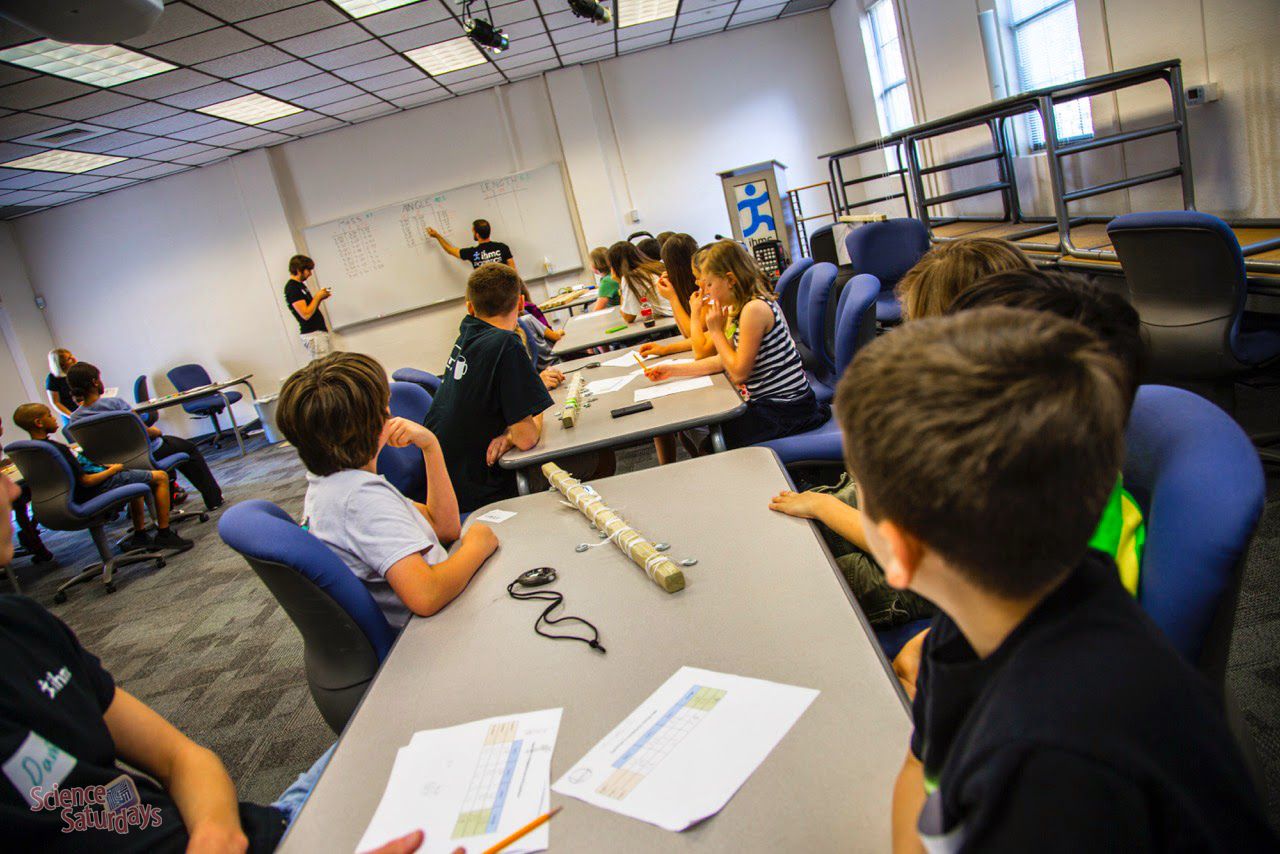
The measurements were averaged.
-
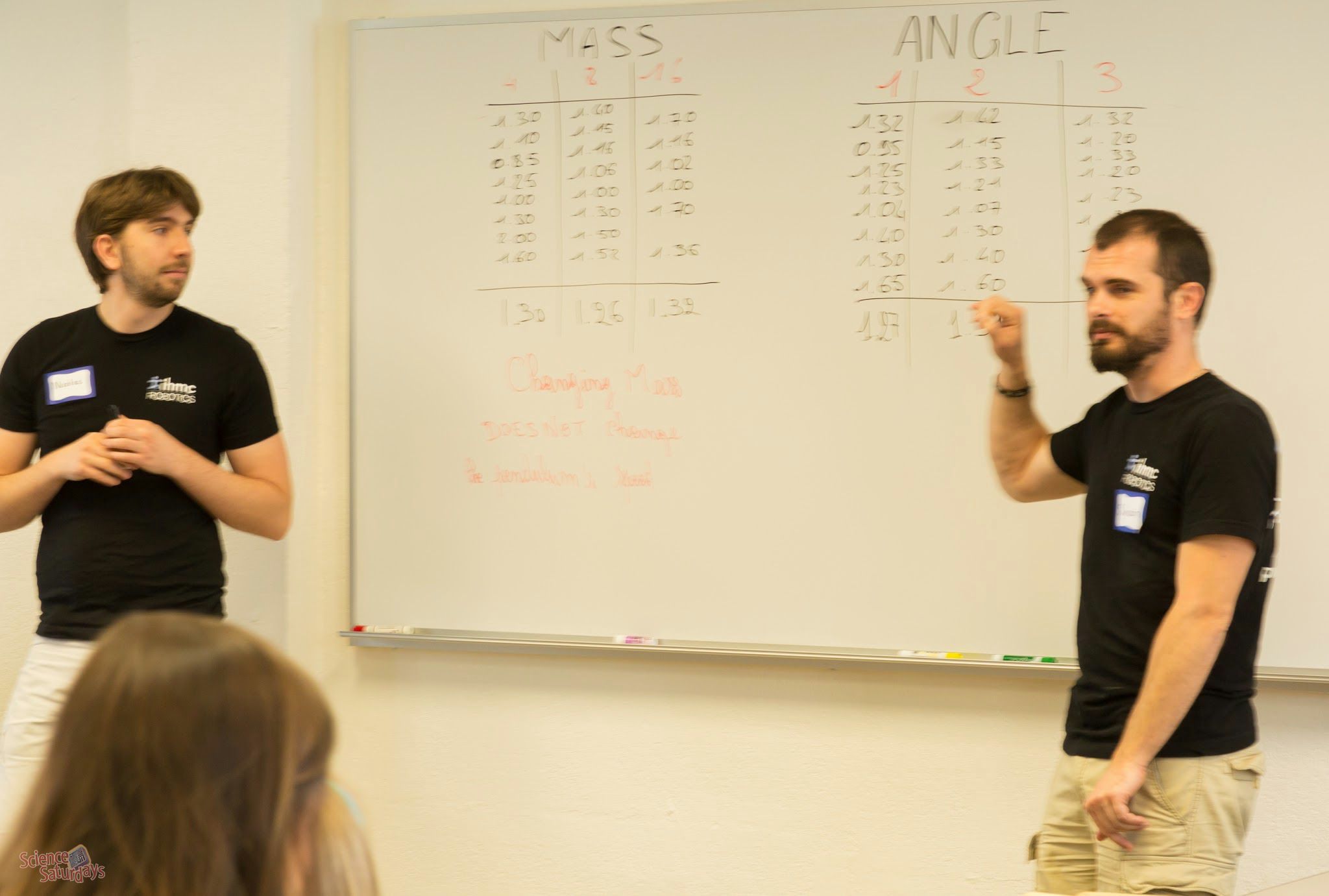
Groups were called upon one at a time to share their data.
-
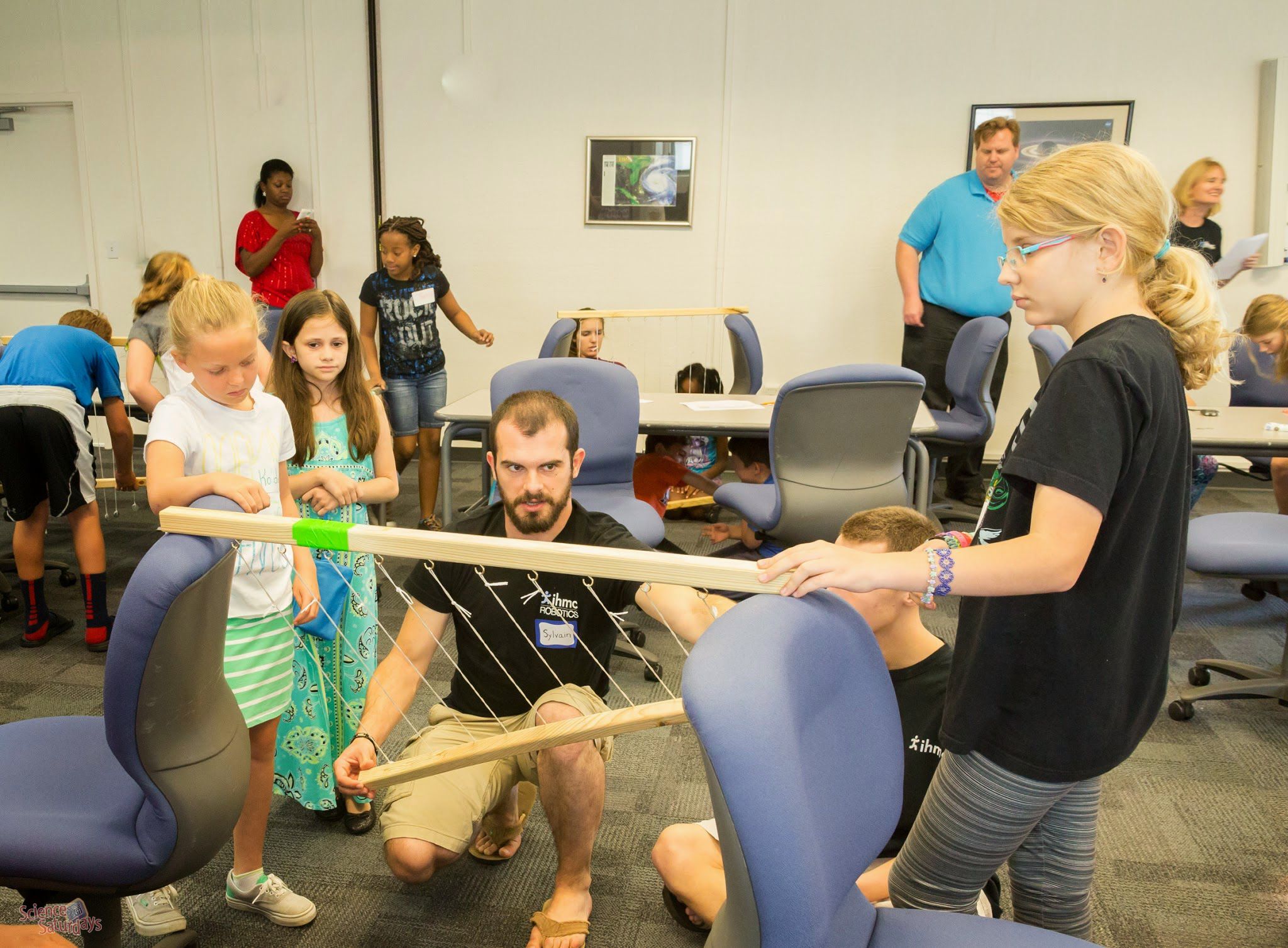
Sylvain, assisted by Nick, charted the data from each group. The results showed that mass and release angle do not affect the time required for the pendulum to complete a swing.
-
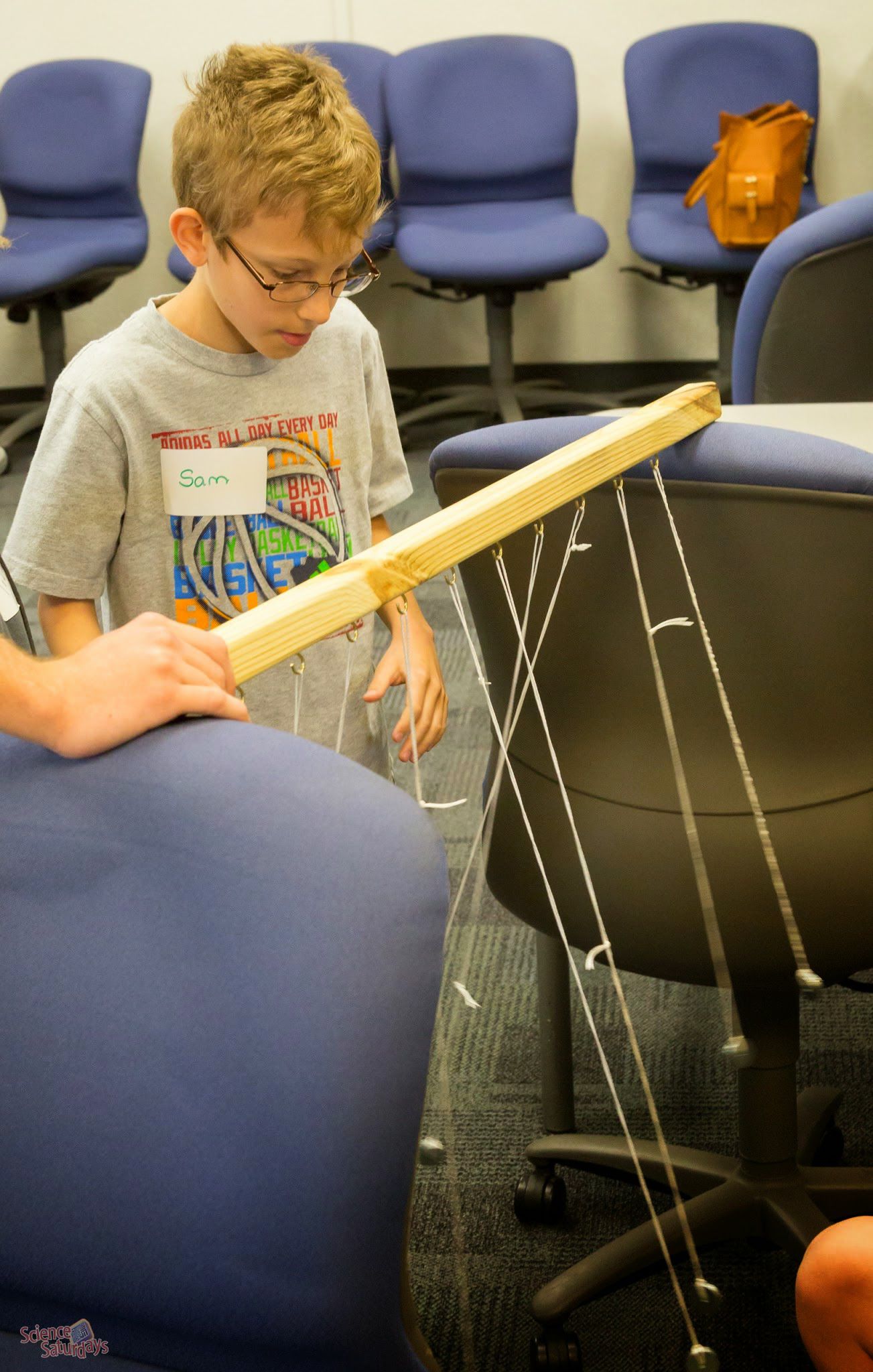
The characteristic affecting the timing of the pendulum is its length. Sylvain had designed a fun experiment based on length.
-
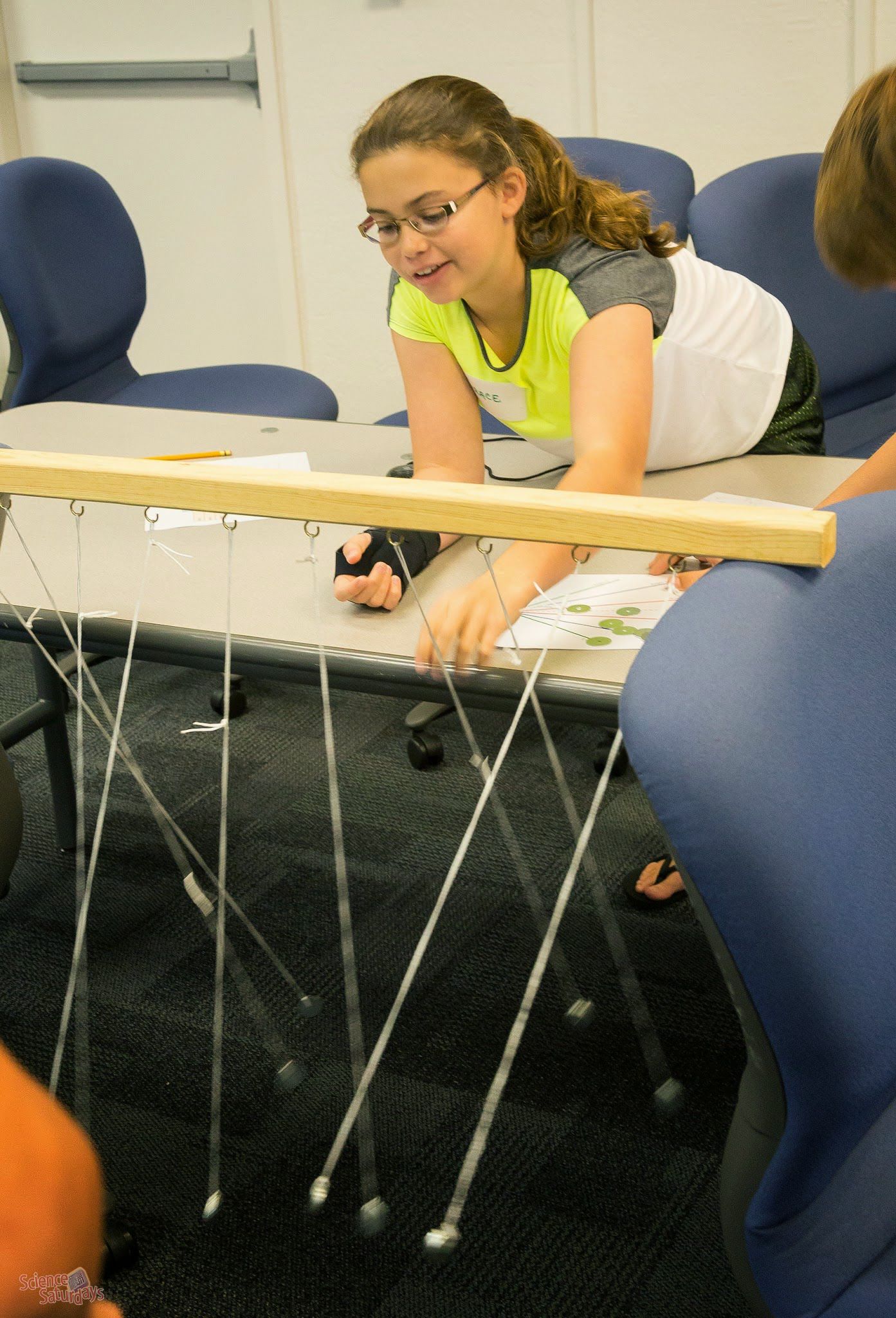
When all the pendulums were released at the same time, interesting patterns of motion resulted.
-
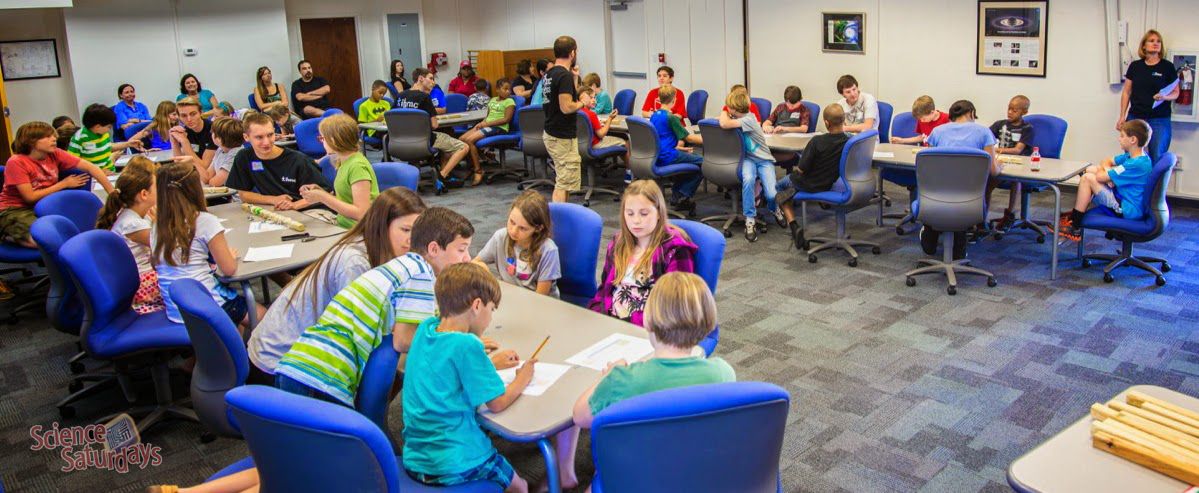
Thank you, Sylvain and volunteers, for making this another fun Science Saturday. Big thanks to the Kugelman Foundation and the J.H. Baroco Foundation for helping to make this set of hands-on physics activities available to elementary school students who are discovering their interest in science.

